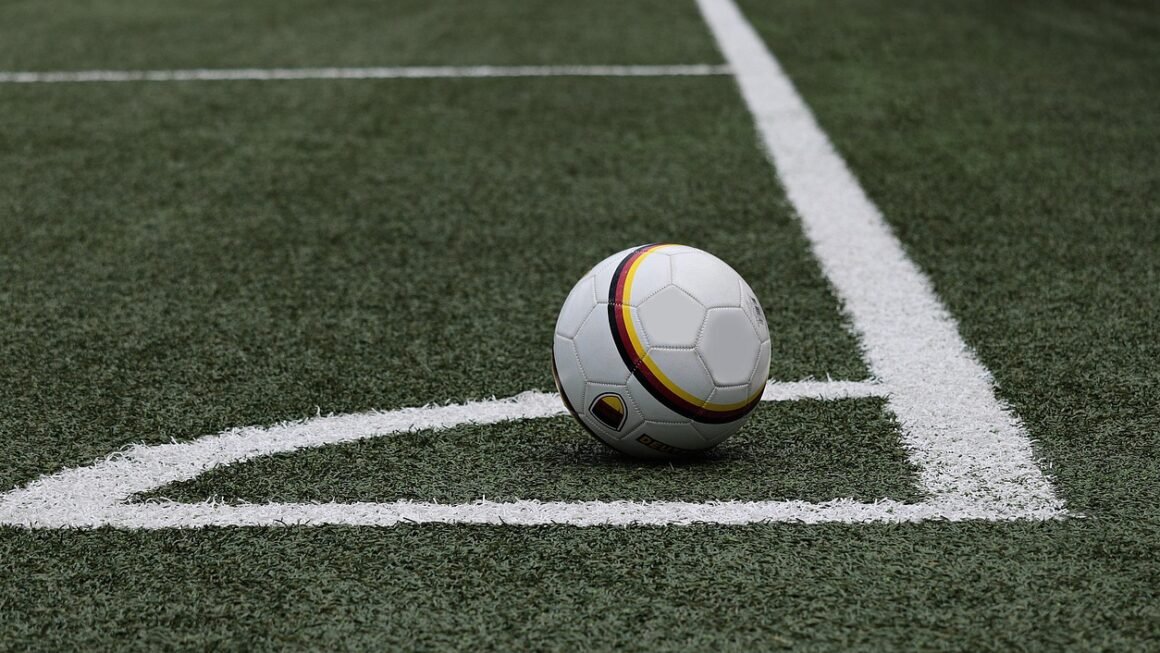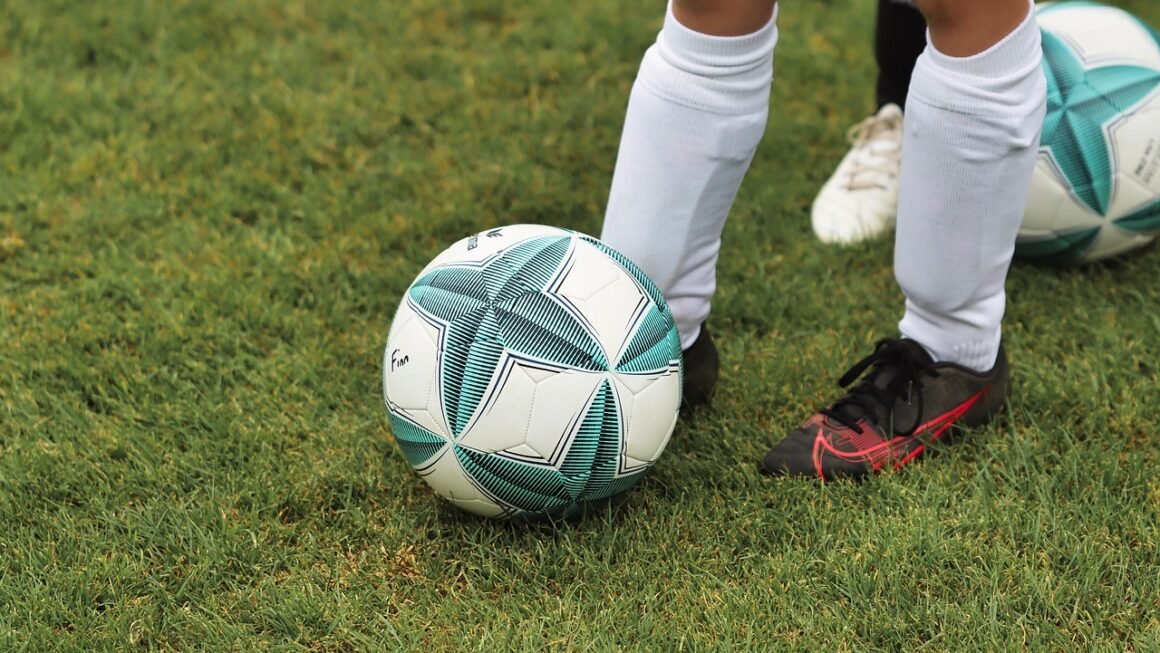From the roar of the crowd to the perfectly thrown spiral, American football is more than just a game; it’s a cultural phenomenon. Millions tune in each week to witness the strategy, athleticism, and drama unfold on the gridiron. But beyond the surface lies a complex and fascinating sport with a rich history and intricate rules. Whether you’re a seasoned fan or a curious newcomer, this guide will delve into the world of American football, exploring its key aspects and providing a deeper understanding of the game.
The Basics of American Football
The Objective
The goal of American football is simple: advance the ball down the field into the opposing team’s end zone to score a touchdown. The team with the most points at the end of the game wins. Points are scored through touchdowns (6 points), extra points after touchdowns (1 or 2 points), field goals (3 points), and safeties (2 points).
- Touchdown: Occurs when a player runs the ball into the opponent’s end zone or catches a pass in the end zone.
- Extra Point: An attempt to score after a touchdown, typically a kick through the uprights (1 point) or a running/passing play into the end zone (2 points).
- Field Goal: A kick through the uprights, usually attempted on fourth down when a team is within reasonable kicking distance (approximately 40 yards or less).
- Safety: Awarded to the defensive team when an offensive player is tackled in their own end zone.
The Field
The football field, also known as the gridiron, is a rectangular area measuring 100 yards long between the goal lines and 53 1/3 yards (160 feet) wide.
- Yard Lines: Marked every 5 yards, indicating the distance to the nearest goal line.
- End Zones: Located at each end of the field, extending 10 yards beyond the goal lines.
- Uprights (Goal Posts): Located at the back of each end zone, used for field goals and extra points.
- Hash Marks: Short lines located on the inside of the yard lines, used for ball placement.
Key Positions
Each team has offensive, defensive, and special teams units, each with specific roles and responsibilities. Understanding these positions is crucial for appreciating the game’s nuances.
- Offense:
Quarterback (QB): The leader of the offense, responsible for calling plays and throwing the ball.
Running Back (RB): Carries the ball on running plays.
Wide Receiver (WR): Catches passes from the quarterback.
Offensive Line (OL): Protects the quarterback and creates running lanes for the running back.
Tight End (TE): A hybrid position, acting as both a receiver and a blocker.
- Defense:
Defensive Line (DL): Tries to sack the quarterback and stop the run.
Linebacker (LB): Supports the defensive line in stopping the run and covering passes.
Defensive Back (DB): Covers wide receivers and defends against passes.
- Special Teams:
Kicker (K): Kicks field goals and extra points.
Punter (P): Kicks the ball to the opposing team on fourth down.
* Returner (KR/PR): Returns kickoffs and punts.
Understanding the Flow of the Game
Downs and Play Calling
The game is played in a series of plays, with the offensive team having four “downs” to advance the ball at least 10 yards. If they succeed, they earn a “first down” and a new set of four downs. If they fail, possession changes to the opposing team.
- First Down: Achieved by advancing the ball at least 10 yards.
- Play Calling: The quarterback (or coach) selects a play designed to either run the ball or pass it.
- Audibles: Changes to the play called by the quarterback at the line of scrimmage based on the defense’s alignment.
Penalties and Fouls
Penalties can significantly impact the game. They are enforced by moving the ball a specified number of yards towards the offending team’s end zone.
- False Start: An offensive player moving before the snap. (5-yard penalty)
- Holding: Illegally impeding an opponent. (10-yard penalty for offensive holding; 5-yard penalty and automatic first down for defensive holding)
- Pass Interference: Illegally interfering with a receiver’s attempt to catch a pass. (Penalty varies depending on location of the foul)
- Unnecessary Roughness: Excessive or illegal contact. (15-yard penalty)
The Clock and Timeouts
Understanding the game clock is crucial. There are two 30-minute halves, each divided into two 15-minute quarters. The clock stops under certain circumstances, such as incomplete passes, out-of-bounds plays, and penalties.
- Timeouts: Each team has three timeouts per half to stop the clock and strategize.
- Two-Minute Warning: A mandatory timeout called with two minutes remaining in each half.
- Clock Management: A crucial aspect of the game, especially towards the end of each half, involving strategic use of timeouts and plays to maximize scoring opportunities.
Strategies and Tactics in Football
Offensive Strategies
Offensive strategy involves balancing running and passing plays to keep the defense guessing. Different offensive systems exist, each with its own strengths and weaknesses.
- Running Game: Focuses on establishing a strong running attack to control the clock and wear down the defense.
- Passing Game: Relies on the quarterback’s ability to throw accurate passes to wide receivers.
- Spread Offense: A modern offense that uses multiple wide receivers to stretch the defense horizontally.
- West Coast Offense: Emphasizes short, controlled passes to move the ball down the field.
Defensive Strategies
Defensive strategy centers on stopping the run, pressuring the quarterback, and preventing completions.
- Zone Coverage: Defensive backs cover specific areas of the field, rather than individual receivers.
- Man-to-Man Coverage: Defensive backs cover specific receivers, following them wherever they go.
- Blitzing: Sending extra defenders to pressure the quarterback.
- Run Blitz: Sends a linebacker or defensive back through a gap to attack the running back in the backfield.
Special Teams Strategies
Special teams plays are often overlooked, but they can be game-changing.
- Kickoff Coverage: Preventing the opposing team from returning the kickoff for a long gain.
- Punt Coverage: Preventing the opposing team from returning the punt for a long gain.
- Field Goal/Extra Point Block: Attempting to block a field goal or extra point attempt.
- Onside Kick: A short kickoff designed to be recovered by the kicking team.
The NFL and College Football
The National Football League (NFL)
The NFL is the premier professional American football league, consisting of 32 teams. The season culminates in the Super Bowl, one of the most-watched sporting events in the world.
- Divisions and Conferences: Teams are divided into two conferences (AFC and NFC), each with four divisions (North, South, East, and West).
- Playoffs: The top teams from each conference qualify for the playoffs, culminating in the Super Bowl.
- Super Bowl: The championship game between the AFC and NFC champions.
- NFL Draft: An annual event where NFL teams select eligible college players.
College Football
College football is a highly popular sport in the United States, with numerous universities competing for national championships.
- NCAA Divisions: College football is organized into different divisions, with the Football Bowl Subdivision (FBS) being the highest level.
- Bowl Games: Post-season games between top college football teams.
- College Football Playoff (CFP): Determines the national champion through a four-team playoff.
- Rivalries: Intense rivalries between schools can create some of the most exciting games in sports. Think Alabama vs. Auburn, Ohio State vs. Michigan, and Army vs. Navy.
The Evolution of the Game
Rule Changes and Their Impact
American football has evolved significantly over the years, with numerous rule changes designed to improve player safety and enhance the game’s excitement.
- Helmet Rules: Stricter rules on helmet-to-helmet contact have been implemented to reduce concussions.
- Pass Interference Rules: Adjustments to pass interference rules have aimed to balance offensive and defensive advantages.
- Kickoff Rules: Changes to kickoff rules have sought to reduce high-speed collisions and improve player safety.
The Future of Football
The future of American football is likely to involve continued efforts to enhance player safety, improve the fan experience, and adapt to evolving societal trends.
- Technology and Innovation: Advancements in technology are being used to improve player tracking, injury prevention, and game analysis.
- Globalization: Efforts are underway to expand the reach of American football internationally.
- Evolving Strategies: Offensive and defensive strategies will continue to evolve as coaches and players seek new ways to gain an advantage.
Conclusion
American football is a captivating sport, blending physical prowess with strategic thinking. Understanding the fundamentals, rules, and strategies of the game can significantly enhance your appreciation for this uniquely American pastime. Whether you’re a casual observer or a die-hard fan, there’s always something new to learn about the world of American football. So, grab your favorite team gear, settle in, and enjoy the thrill of the gridiron!



